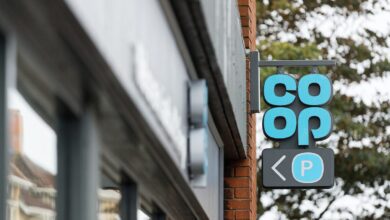Five ways paid search can help retailers maximise sales events

Register to get 1 free article
Reveal the article below by registering for our email newsletter.
Want unlimited access? View Plans
Already have an account? Sign in
Accounting for an estimated £8bn sales in 2017, Black Friday is a firm fixture on the retail calendar, even stealing sales from more traditional Christmas spending (December spending fell by 1.5% according to ONS). Having merged into Cyber Monday, the most effective ‘Black Fridays’ last year were actually week-long events, or even 10-day periods in the case of Amazon.
But it’s not just one-off events like Black Friday for which brands need to ready their discounting strategies. Depending on the brand, seasonal sales, Valentine’s Day and even events like Mother’s and Father’s Day are also increasingly competitive. Here are five ways to maximise discounting periods through an effective paid search strategy.
1) Own the ad space for your brand’s best sellers
The key is to take up as much screen space as possible in the SERPs (search engine results pages) to ensure that people are more likely to click your ad than your competitor’s.
- Assess your hero products – which are going to drive the most sales during the period?
- Look at current impression share and average position. Are you hitting 99-100% impression share at an average position 1? Probably not yet (throughout the year this may be prove to be less profitable in ROI terms), but to make the most of a sales period, allow for extra budget to push for those top positions.
- By heavily promoting your high lifetime value products (the ones people keep coming back for) you can gain new valuable customers.
- Maximise use of ad extensions including: site links, reviews, structured snippets, call outs and seller ratings.
- Pull your best sellers into their own shopping campaign and prioritise them as high. Bid at a product level and add negative keywords to maximise your budget.
2) Pin down your remarketing strategy
Previous visitors to your website are an important audience, so ensure you have a dedicated remarketing approach.
- Create audience types (group visitors based on how they’ve behaved on your website on previous visits). Example audiences may be Converters, Basket Abandoners, Non-purchasers. Use this technique to build your audience in preparation for the sales period.
- Make sure your remarketing banners reflect the sales messaging and include countdowns for the last few hours of the discount to really push a sense of urgency.
- Display (GDN) remarketing for your best selling lines can also work well over the period. Ensure your banners have really strong messaging and a call to action.
Consider dynamic remarketing to capture those people that abandoned basket but are more likely to convert with a sales discount.
3) Consider non-traditional search channels
Paid search doesn’t just include Adwords and Bing. Other social platforms offer pay per click advertising and are worth considering, depending on your products and audience.
- Consider Pinterest promoted pins, for example. The life of a pin can be several months, so from the initial small promotion cost, the ROI from that pin will increase organically as time goes along.
Instagram and Facebook promotions can be strong but consider carefully if these are right for your brand and customer demographic.
4) Synergise your approach
Marketing messages work best when they sync to maximise impact.
- Make sure your keyword, ad copy and landing pages all match up. Keep those bounce rates low by delivering potential customers what they are expecting.
- Is your ad copy centred around what the customer is looking for? Or all about you? Unless you are Nike or Coca Cola, branded messaging doesn’t offer a good customer experience and will not deliver a good click through rate.
5) Are you maximising mobile?
Websites and digital marketing are often foremost in retailers’ minds. However, as a fast-growing (and delivering) channel, mobile shouldn’t be an afterthought.
- There’s a reason Google is prioritising mobile optimised websites. We’re currently seeing the majority of our clients’ sales coming through mobile devices. If your website’s mobile experience isn’t up to scratch, sales will be lost.
- It’s worth noting that Adwords will also show your ads less often, reducing your visibility in the marketplace.
- To give you some context: 3% of users aged 18-34 use desktop as their main platform. 77% of users in this age range are multi-platform and 20% are mobile only (source: comScore).
Al Keck is the founder and managing director of Infinity Nation, which helps manage the ecommerce operations for many major brands.







